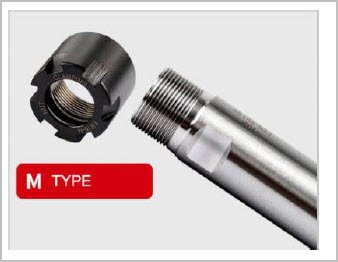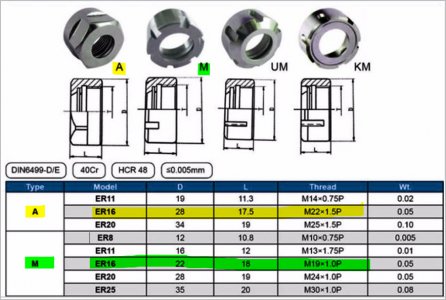That is an interesting observation. Last night I was using the 5C version on a metric shank countersink. It seemed like I was in between sizes. It was a bit tight on one collet, which you are not supposed to exceed nominal, but next smaller seemed like collet had to collapse quite a bit & required extra tightening. These are 1/64" increment so I figure I have the range covered. But that may not be entirely true. I have this same issue on occasion in my lathe where there are certain size gaps, typically on metric stock. I was almost warming up to getting a metric 5C set for that reason.
One of my ideas was to use an ER-16 shank with smaller nut & basically make my own spin work head from block of metal. I really could do no worse than the 'kit' I now have, in fact can visualize many improvements. I'm not really that into end mill sharpening, mostly smaller diameter tooling. But I am intrigued by other ways to impart helical relief & other facet features. But I suspect the ER shank might have to be drilled further into the shaft to minimize stick out. Not sure if its hardened or viable. Smells like another rabbit hole like my 5C conversion idea.
Once I'm done my base level fixing I need to spend time focusing on grinding. These machines & tool grinding is a much deeper topic than I imagined.




